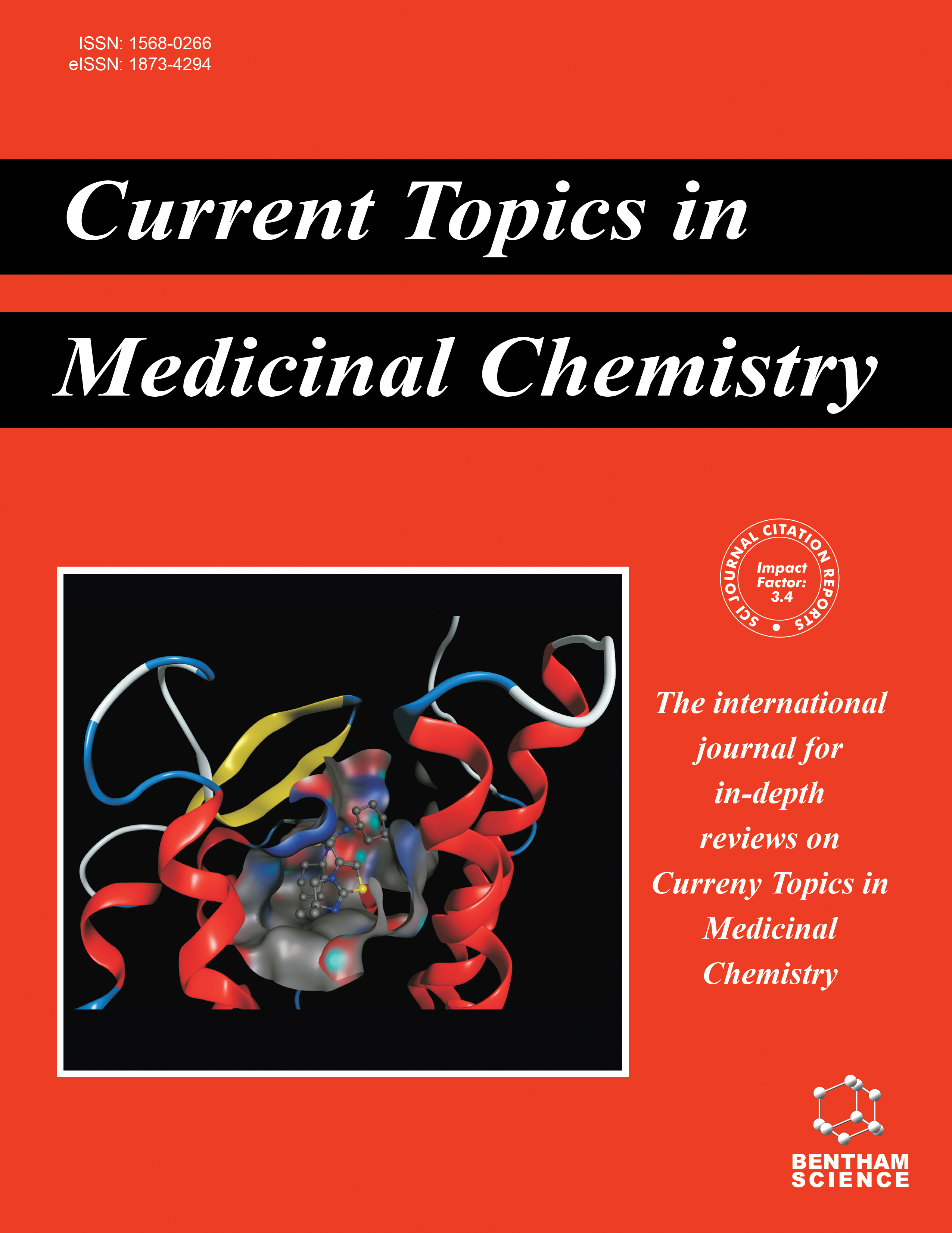- Home
- A-Z Publications
- Current Topics in Medicinal Chemistry
- Previous Issues
- Volume 18, Issue 6, 2018
Current Topics in Medicinal Chemistry - Volume 18, Issue 6, 2018
Volume 18, Issue 6, 2018
-
-
Recent Development of Small Molecule Glutaminase Inhibitors
More LessAuthors: Minsoo Song, Soong-Hyun Kim, Chun Y. Im and Hee-Jong HwangGlutaminase (GLS), which is responsible for the conversion of glutamine to glutamate, plays a vital role in up-regulating cell metabolism for tumor cell growth and is considered to be a valuable therapeutic target for cancer treatment. Based on this important function of glutaminase in cancer, several GLS inhibitors have been developed in both academia and industry. Most importantly, Calithera Biosciences Inc. is actively devel Read More
-
-
-
Inhibition of Pyruvate Dehydrogenase Kinase as a Therapeutic Strategy against Cancer
More LessAuthors: Swatishree Sradhanjali and Mamatha M. ReddyCancer cells alter their metabolism to support the uninterrupted supply of biosynthetic molecules required for continuous proliferation. Glucose metabolism is frequently reprogrammed in several tumors in addition to fatty acid, amino acid and glutamine metabolism. Pyruvate Dehydrogenase Kinase (PDK) is a gatekeeper enzyme involved in altered glucose metabolism in tumors. There are four isoforms of PDK Read More
-
-
-
Targeting Key Transporters in Tumor Glycolysis as a Novel Anticancer Strategy
More LessAuthors: Yunli Shi, Shengnan Liu, Shabir Ahmad and Qingzhi GaoIncreased glycolysis has been one of the metabolic characteristics known as the Warburg effect. The functional and therapeutic importance of the Warburg effect in targeted therapy is scientifically recognized and the glucose metabolic pathway has become a desirable target of anticancer strategies. Glucose transporters (GLUTs) play an important role in cancer glycolysis to sustain cancer cell proliferation, metastasis and su Read More
-
-
-
Targeting Sugar Uptake and Metabolism for Cancer Identification and Therapy: An Overview
More LessAuthors: Marina Tanasova, Vagarshak V. Begoyan and Lukasz J. WeselinskiMetabolic deregulations have emerged as a cancer characteristic, opening a broad avenue for strategies and tools to target cancer through sugar uptake and metabolism. High expression levels of sugar transporters in cancer cells offered glycoconjugation as an approach to achieve enhanced cellular accumulation of drugs and imaging agents, with the sugar moiety anchoring the bioactive cargo to cancer cells. On the other ha Read More
-
-
-
SCAP/SREBPs are Central Players in Lipid Metabolism and Novel Metabolic Targets in Cancer Therapy
More LessAuthors: Xiang Cheng, Jianying Li and Deliang GuoLipid metabolism reprogramming emerges as a new hallmark of malignancies. Sterol regulatory element-binding proteins (SREBPs), which are central players in lipid metabolism, are endoplasmic reticulum (ER)-bound transcription factors that control the expression of genes important for lipid synthesis and uptake. Their transcriptional activation requires binding to SREBP cleavageactivating protein (SCAP) to translocate the Read More
-
-
-
Inhibition of Glycolysis and Glutaminolysis: An Emerging Drug Discovery Approach to Combat Cancer
More LessAuthors: Nicholas S. Akins, Tanner C. Nielson and Hoang V. LeCancer cells have a very different metabolism from that of normal cells from which they are derived. Their metabolism is elevated, which allows them to sustain higher proliferative rate and resist some cell death signals. This phenomenon, known as the “Warburg effect”, has become the focus of intensive efforts in the discovery of new therapeutic targets and new cancer drugs. Both glycolysis and glutaminolysis pathways Read More
-
-
-
Development of Novel Therapeutics Targeting Isocitrate Dehydrogenase Mutations in Cancer
More LessIsocitrate dehydrogenases 1 and 2 (IDH1 and IDH2) are key metabolic enzymes that catalyze the conversion of isocitrate to α-ketoglutarate (αKG). IDH1 and IDH2 regulate several cellular processes, including oxidative respiration, glutamine metabolism, lipogenesis, and cellular defense against oxidative damage. Mutations in IDH1 and IDH2 have recently been observed in multiple tumors, including gliomas, acute myeloid leuke Read More
-
Volumes & issues
-
Volume 25 (2025)
-
Volume 24 (2024)
-
Volume 23 (2023)
-
Volume 22 (2022)
-
Volume 21 (2021)
-
Volume 20 (2020)
-
Volume 19 (2019)
-
Volume 18 (2018)
-
Volume 17 (2017)
-
Volume 16 (2016)
-
Volume 15 (2015)
-
Volume 14 (2014)
-
Volume 13 (2013)
-
Volume 12 (2012)
-
Volume 11 (2011)
-
Volume 10 (2010)
-
Volume 9 (2009)
-
Volume 8 (2008)
-
Volume 7 (2007)
-
Volume 6 (2006)
-
Volume 5 (2005)
-
Volume 4 (2004)
-
Volume 3 (2003)
-
Volume 2 (2002)
-
Volume 1 (2001)
Most Read This Month
Article
content/journals/ctmc
Journal
10
5
false
en


